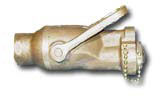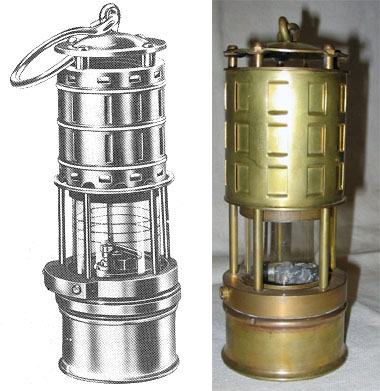 |
 |
 |
 |
| HOME |
| ABOUT US |
| PARTICIPATE |
| COLLECTIONS |
| DC EQUIPMENT MUSEUM |
| SHIP&SUBMARINE MUSEUM |
| WW II DAMAMGE REPORTS |
| SHIPBOARD CASUALTIES |
| DAMAGE CONTROL MUSEUM |
|
USS JOHN F. KENNEDY (CV 67), Belknap-Kennedy Disaster Nov. 22, 1975 |
|
One of the most dangerous Navy ship collisions took place in late 1975, when the guided-missile cruiser Belknap collided with the aircraft carrier John F. Kennedy during maneuvers in the Mediterranean Sea. Eight sailors died, 48 were injured and damage to the cruiser was so severe repairs took four years. But it took 14 years for the rest of the story to come out: The collision triggered fires and explosions within 40 feet of nuclear weapons aboard the cruiser. The commander of a Navy task force classified the Nov. 22, 1975, incident as the most dangerous kind -- in government jargon, a "broken arrow" accident, one involving the possibility of detonation of nuclear weapons. This was revealed in 1989 after the environmental group Greenpeace obtained a secret report about the fire aboard the Belknap. The ship carried W-45 nuclear warheads used on Terrier antiaircraft missiles. The secret report acknowledged a "high probability that nuclear weapons on USS Belknap were involved in fire and explosions subsequent to the collision." Rear Adm. Eugene Carroll, commander of Task Force 60.1, was the flag officer aboard the Kennedy and the author of the "broken arrow" message. "I was in the flag quarters [of the Kennedy] with my staff," Carroll said. "The impact had a scraping, shuddering feel." "The Kennedy was conducting routine night-flight operations [in the Ionian Sea]. The Belknap was a plane guard. The standing night orders to the plane guard were that they would not approach within 2,000 yards of the hemisphere forward of the beam of the carrier, leaving a one-mile semicircle ahead of the carrier that was 'off-limits' to the escort." The Belknap had been abreast of the carrier when ordered to take station astern as the plane-guard ship. As the cruiser turned, so did the carrier, maneuvering into the wind to conduct air operations. The ships soon were approaching nearly head-on and a collision was inevitable. The Belknap passed under the huge overhang of the Kennedy's angled deck on the carrier's port side. As the cruiser's aluminum superstructure crumpled, it cut through aircraft refueling lines on the carrier; aviation fuel sprayed onto and into the Belknap, feeding fires and explosions. Aboard the Belknap, Fire Control Technician 3rd Class Dave Kelchner had just finished watching the evening movie. "I was in the forward part of the ship and the collision happened at the mid-ship area." Kelchner said. "I was in the shower, thinking about writing a letter home and going to bed, when the first rumbling happened. I thought we'd run over a school of whales. I thought, 'What the hell happened?' We weren't called to general quarters. We just got dressed -- I couldn't run around in just a towel -- and that's when the smoke started coming down the hallways and into the cabin space." Carroll remembered that general quarters was called immediately on the Kennedy, where fires also ignited. As the collision was followed by crisis, two damage-control crews on the Belknap were trapped aft and forward. Kelchner and other sailors on his part of the Belknap were trapped. "We contained ourselves in our area after closing the watertight integrity doors," Kelchner said. "We all got towels, wetted them, and lay down on the deck. We just lay there for hours saying things like, 'Something happened, we got hit.' The fires lasted two, three, four hours, and kept reigniting every 15 or 20 minutes, but by morning we were able to get out and get to safety. We were told the cause was a communication gap between our ship and the Kennedy." Fortunately, the fire on the Belknap did not reach the nuclear warheads. After an Article 32 investigation by Rear Adm. (later Vice Adm.) Donald Engen, vice commander of U.S. Naval Forces Europe, the Navy court-martialed the Belknap's captain, who was acquitted of wrongdoing. "Some people were shocked," Carroll said. "[In my opinion], there was a failure to set a command climate in which the officer on the bridge felt compelled to call the captain when he got into a situation he couldn't handle. It was God's grace that there wasn't a direct collision, hull to hull." Carroll gives much credit to the other ships in the screening force. "They turned on a fire pump and just flooded the Belknap." The next morning, Carroll went aboard the Belknap, which "looked like the surface of the moon -- all of the lightweight materials that had melted and dripped down." The massive damage to the Belknap's aluminum superstructure -- adopted to save weight -- was a result of the collision and following fires, during which the aluminum melted. Subsequent warship classes have been built with steel superstructures to avoid similar calamities. The Belknap court-martial prompted Chief of Naval Operations Adm. Jerome L. Holloway to issue a 1976 reminder to the fleet about the responsibility of a captain for his ship and crew. The Belknap eventually was towed to the Philadelphia Naval Shipyard, where it spent the next four-and-a-half years under repair. Returning to service in May 1980, the cruiser served as flagship of the Sixth Fleet in the Mediterranean before decommissioning in February 1995. It was sunk as a target in September 1998. |